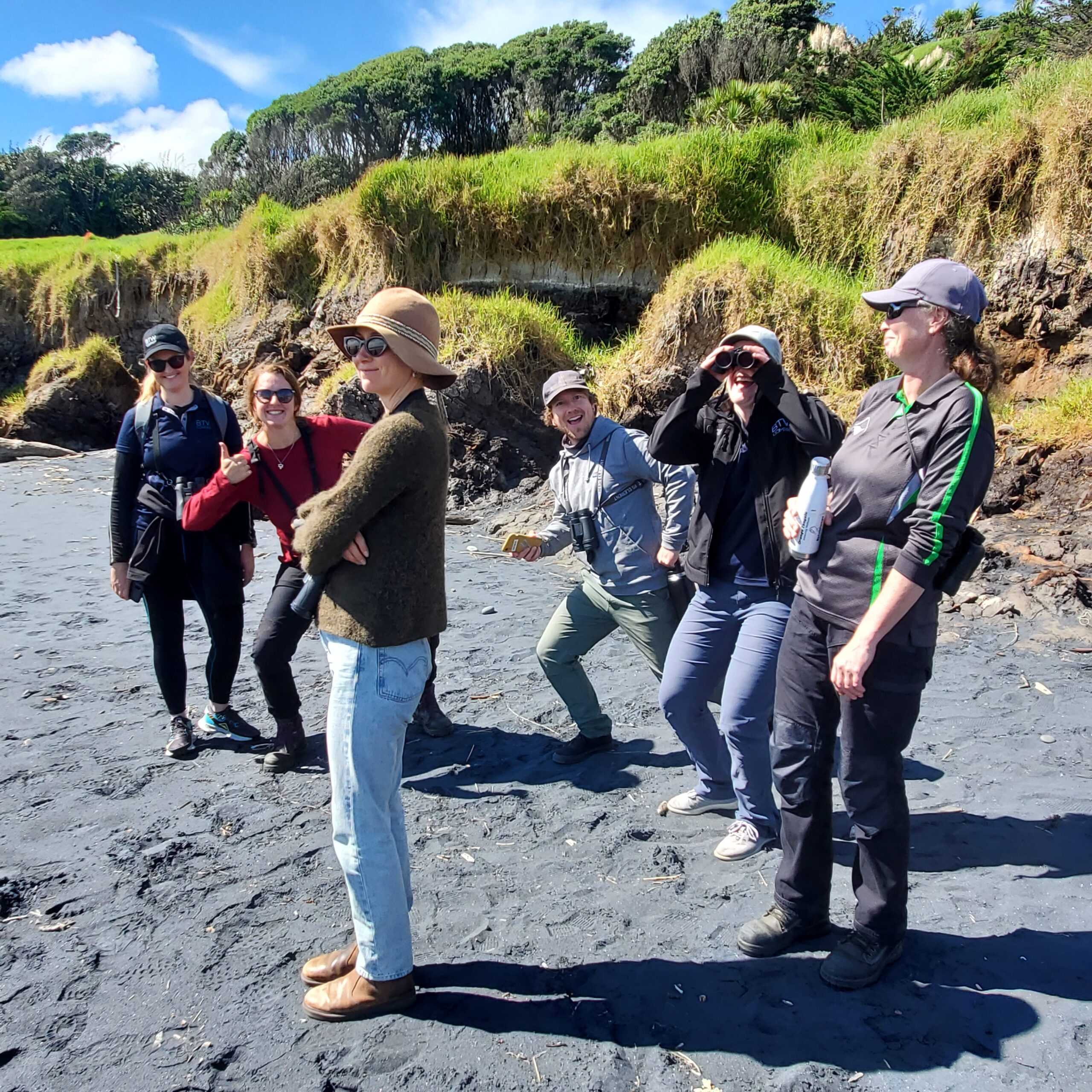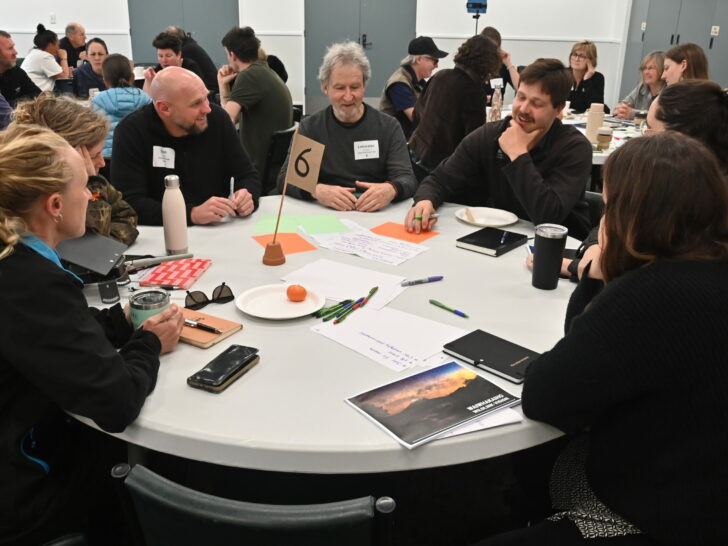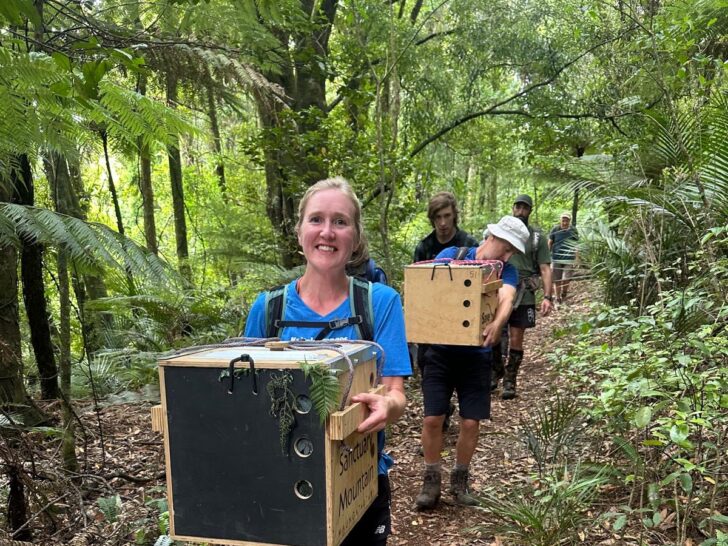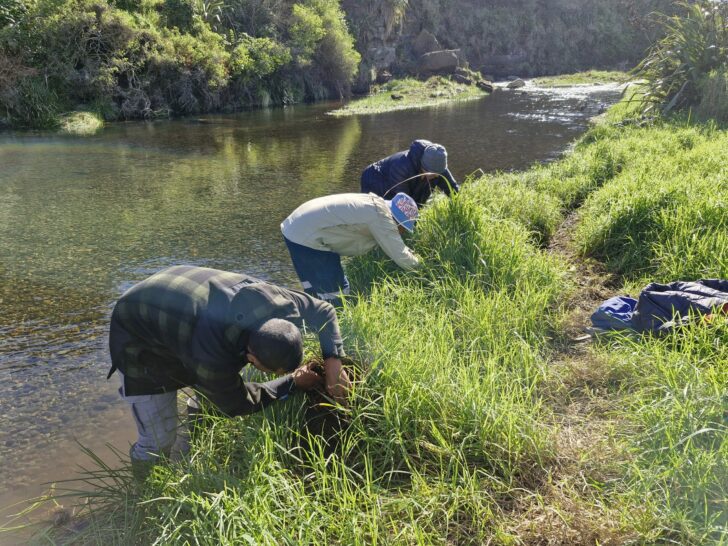Support our community to restore Taranaki's natural environment
We can’t do it alone. We need your help! Any money you donate will go directly to supporting Taranaki projects restoring and protecting biodiversity. You get to choose where it goes to. And if you can’t help out with cash, you can help in other ways.
Te Whānau Toroa and the importance of people

During her five years at Wild for Taranaki, biological oceanographer, Danielle Gibas, has developed enormous respect for our members who are dedicated to maintaining sea and shorebird populations.
As Strategic Lead of Te Whānau Toroa, Danielle aims to honour the years of work that has gone into protecting our local sea and shorebirds.
Te Whānau Toroa has been developed to generate support, whanaungatanga, and resources that will help safeguard these restoration efforts into the future.
“We hope to take their skill sets into the future. It’s like a mapping exercise where we’re working out where skills exist and where the gaps are. And that goes down to an individual community member level, if there are people out there who have skills in handling or whatever it may be, and are interested in getting involved, then we want to hear from them. It’s about understanding our community landscape and just becoming a better team – working better together. Our role is to draw those connections and then to support the collaboration.”
Our sea and shorebirds possess much charm or ātahu, which endears people to the cause – but aside from being charming, sea and shorebirds play an essential part in our biodiversity.
“These birds are an incredibly important connector between our terrestrial and marine ecosystems,” says Danielle.
Her study of large ocean systems, migration, and nutrient cycles gives Danielle a unique insight into the importance of our seabirds.
The subject of her masters – the life cycle of tiny parasites that live in shrimps – perfectly illustrates how the smallest microorganisms, combined with sea and shorebirds are vital part of the biodiversity cycle.
The shrimp consumes the tiny parasite which scrambles their brain, causing them to swim on the surface. The parasite creates a bright orange stain on the shrimp, so while it is swimming on the ocean’s surface it becomes visible to seabirds flying above. The birds swoop down, eat the shrimp, then defecate on land fertilising the soil. So, finally, the sea-to-land nutrient cycle is complete!
Groups of mostly volunteers have achieved great success keeping Kororā, tītī, and tūturiwhatu populations healthy, with minimal resources and time. Our goal with Te Whānau Toroa is to help problem-solve, find resources, and share knowledge and skill sets.
“Ideally, we’d love to hear from anyone passionate about sea and shorebirds. And we aim to keep going out into the community and having conversations around people’s aspirations for them and enable the best outcomes for the birds.”
There are simple things we can do as a wider community to protect our sea and shorebirds, from learning how we keep nesting birds safe from pets to public education about how to identify the different species.
Te Whānau Toroa is in its beginning stages, but the enthusiasm these birds attract has brought people in the community together for many years. The ultimate goal of the initiative is to tautoko this work and continue the momentum for years to come.
Ko te pae tawhiti, whāia kia tata, ko te pae tata whakamaua kia tina.
Seek out distant horizons, and cherish those you attain.



